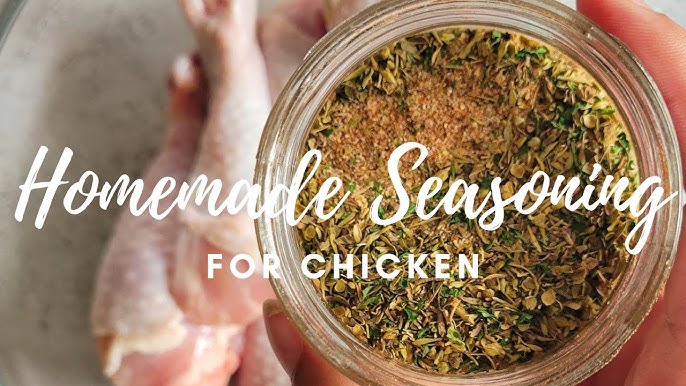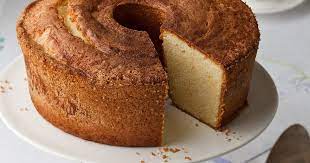Chicken Seasoning Recipe: Let’s be honest—chicken is one of the most consumed meats globally, but it can also be bland if not seasoned right. That’s where the magic of seasoning comes in. Seasoning isn’t just a sprinkle of salt and pepper; it’s an alchemy of spices and herbs that transforms a plain piece of meat into a savory, mouthwatering dish.
Think of seasoning like your favorite playlist—it sets the mood. Whether you’re going for smoky, spicy, herby, or tangy, the right blend brings your chicken to life. From everyday meals to fancy feasts, seasoning makes all the difference.
What makes a good chicken seasoning? Balance. Too much salt and it’s overwhelming. Not enough flavor and it’s underwhelming. A well-crafted seasoning blend delivers a perfect punch in every bite.
The Versatility of Chicken Seasoning
The beauty of chicken seasoning lies in its versatility. One mix can work wonders on grilled chicken breasts, crispy fried wings, or juicy oven-roasted thighs. The same blend can double as a dry rub, a marinade base, or even an instant soup booster.
You can even tailor the seasoning to different cuisines. Want a Mexican vibe? Toss in cumin and chili powder. Going Mediterranean? Add oregano and lemon zest. It’s all about experimenting and finding your flavor.
In short, once you master a basic chicken seasoning recipe, you’ll unlock a whole new world of culinary possibilities.
Essential Ingredients for Chicken Seasoning
Common Pantry Spices
Here’s the base lineup for a foolproof, go-to chicken seasoning that works for almost any dish:
- Paprika – Adds color and a sweet-smoky depth
- Garlic Powder – Delivers rich, savory notes
- Onion Powder – Boosts umami and depth
- Black Pepper – Sharp and bold
- Salt – Enhances all other flavors
- Dried Thyme or Oregano – A touch of herby freshness
These ingredients are usually available in most kitchens. They form the backbone of a balanced, flavorful seasoning mix.
Optional Add-Ins for Enhanced Flavor
Want to take your mix up a notch? Here are a few optional upgrades:
- Cayenne Pepper – For a spicy kick
- Brown Sugar – Adds a slight sweetness and caramelizes well
- Cumin – Earthy and smoky, great for depth
- Chili Powder – Brings heat and complexity
- Lemon Zest – Brightens everything up
These extras let you personalize your seasoning to your taste or the dish you’re creating. You don’t need to use them all—pick based on what flavor profile you’re going for.
Best Seasoning Mix for Different Chicken Styles
For Grilled Chicken
When it comes to grilled chicken, bold flavors shine best. A spice-heavy mix with paprika, cumin, garlic, black pepper, and a dash of brown sugar works great. The sugar caramelizes on the grill, adding a touch of smoky sweetness.
Bonus Tip: Mix your seasoning with a bit of olive oil and lemon juice before grilling. It turns into a paste that sticks better and penetrates deeper.
For Fried Chicken
Fried chicken loves a robust and layered seasoning. Add a little cayenne and chili powder to your base for heat, and don’t skip the onion and garlic powders—they’re essential.
Bonus Tip: Season both your flour dredge and the chicken itself. That way, every bite bursts with flavor, inside and out.
For Baked or Roasted Chicken
Oven-roasting brings out rich, deep flavors. Here, a blend of thyme, paprika, garlic, onion, salt, and a touch of sugar does wonders. Consider adding rosemary or sage for a rustic vibe.
Bonus Tip: Let your chicken sit with the seasoning for at least 30 minutes (or overnight) before baking. It lets the flavors sink in beautifully.
Step-by-Step Guide to Make Chicken Seasoning
Step 1: Gather Your Spices
Before you start, make sure you have everything in front of you. You’ll need:
- 1 tbsp paprika
- 1 tbsp garlic powder
- 1 tbsp onion powder
- 2 tsp salt
- 1 tsp black pepper
- 1 tsp dried thyme or oregano
- Optional: 1 tsp brown sugar, ½ tsp cayenne, ½ tsp cumin
Feel free to scale the quantity depending on how much seasoning you want to make. The best part? You can always store the extra.
Step 2: Measure and Mix
Use dry measuring spoons to keep the ratios accurate. Dump all the spices into a small mixing bowl and stir them together with a spoon or a small whisk. Make sure the blend is even—no clumps or layers of one spice.
This step may seem basic, but it’s important. An uneven mix means uneven flavor.
Step 3: Store Properly
Once mixed, transfer your seasoning to an airtight container—preferably a glass jar or a spice bottle with a shaker lid. Label it with the date and name.
Store it in a cool, dry place away from direct sunlight. If stored properly, it can last up to 6 months without losing its flavor.
Pro Tip: Add a few uncooked rice grains or a silica gel packet to prevent clumping.
Tips for Using Chicken Seasoning
How Much to Use?
One of the most common questions when it comes to seasoning chicken is: “How much should I use?” The answer depends on the cut and the cooking method. But here’s a general guide:
- Boneless Chicken Breasts or Thighs: Use about 1 to 1½ teaspoons of seasoning per piece.
- Whole Chicken: Around 2 to 3 tablespoons, making sure to get under the skin for full flavor.
- Wings or Drumsticks: About 1 tablespoon per pound of chicken.
- Shredded or Cooked Chicken: Sprinkle to taste, usually ½ teaspoon per cup.
Remember, it’s easier to add more seasoning later than to fix an over-seasoned dish. If you’re not sure, start small and taste as you go. And don’t forget to consider whether your seasoning mix already contains salt—this affects how much extra salt, if any, you need.
When to Season Chicken?
Timing is everything with seasoning. You don’t want to just slap it on right before cooking and expect magic. Here’s a breakdown of the best times to season your chicken depending on the cooking method:
- For Grilling or Roasting: Season at least 30 minutes to an hour before cooking. Even better, do it overnight. This lets the salt and spices work their way into the meat.
- For Frying: Season your chicken and the flour coating separately for that iconic fried chicken taste.
- For Boiling or Poaching: Season the water or broth your chicken cooks in, and then season the chicken again once it’s shredded or chopped.
You can also turn your dry seasoning into a wet rub or marinade. Just mix it with olive oil, yogurt, lemon juice, or even buttermilk. Let your chicken soak in it, and you’ll have flavor-packed results every time.
Creative Ways to Use Chicken Seasoning
Chicken seasoning isn’t just for… well, chicken. Its versatility can go way beyond that. Let’s look at a few creative ways to use it:
- Roasted Vegetables: Toss your carrots, potatoes, or cauliflower in olive oil and a pinch of the mix before roasting.
- Popcorn Topping: Sprinkle a little on freshly popped corn for a savory snack twist.
- Homemade Fries: Season your French fries or sweet potato wedges before or after baking.
- Egg Dishes: Add a dash to scrambled eggs, omelets, or breakfast casseroles.
- Soups and Stews: Use it as a base spice blend to add body and depth to your broth.
Having a good chicken seasoning mix on hand is like having a secret weapon in your kitchen. A sprinkle here, a pinch there, and suddenly your meals are elevated from average to amazing.
FAQs about Chicken Seasoning Recipe
1. What is the best seasoning for chicken?
The best seasoning for chicken depends on your taste, but a classic mix includes garlic powder, onion powder, paprika, black pepper, salt, and dried herbs like thyme or oregano.
2. Can I use the same seasoning for baked and grilled chicken?
Yes! A versatile chicken seasoning works well for baking, grilling, pan-frying, or air-frying. Just adjust the quantity based on the cooking method and portion size.
3. How long should I let the seasoning sit on the chicken?
For best results, let the seasoning marinate on the chicken for at least 30 minutes. For deeper flavor, marinate it overnight in the fridge.
4. Should I add oil to the seasoning mix?
Adding a bit of olive oil or any cooking oil helps the seasoning stick to the chicken and enhances flavor during cooking.
5. Can I make a large batch and store it?
Absolutely! Mix your dry seasoning and store it in an airtight container for up to 6 months. Just keep it in a cool, dry place.
6. Is homemade chicken seasoning healthier than store-bought?
Yes, homemade seasoning allows you to control the salt and avoid preservatives, making it a healthier choice overall.
7. Can I use this seasoning on other meats?
Definitely! This blend works great on turkey, pork, or even vegetables.
8. How can I make my chicken seasoning spicy?
To add heat, include cayenne pepper, chili flakes, or a pinch of smoked chipotle powder.
Conclusion
There you have it—the ultimate guide to crafting the perfect chicken seasoning mix. Simple, customizable, and incredibly flavorful, this blend can completely transform how your chicken dishes taste. Whether you’re grilling, frying, baking, or meal prepping for the week, having a well-balanced seasoning mix at your fingertips makes cooking not only easier but way more delicious.
From the essential spices to the creative ways to use it, this guide offers everything you need to turn plain chicken into something memorable. So go ahead—dig into your spice rack, mix up a batch, and let your taste buds do the happy dance.
Cooking should be fun, not frustrating. With this homemade chicken seasoning recipe, you’re always one step closer to a killer meal.



